General Sir John Monash, Personal Files Book 17, 11 February - 18 March 1918, Part 4

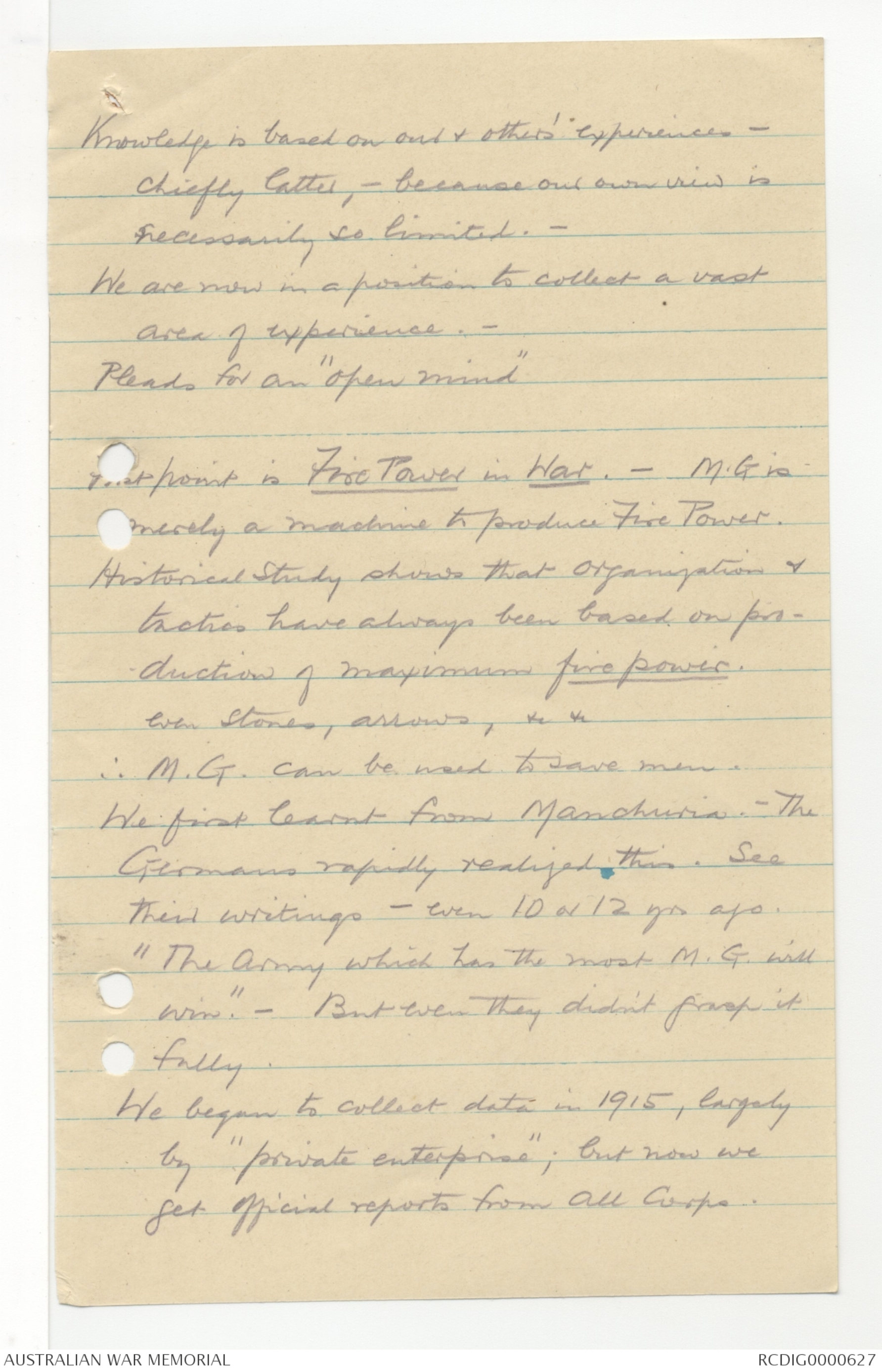

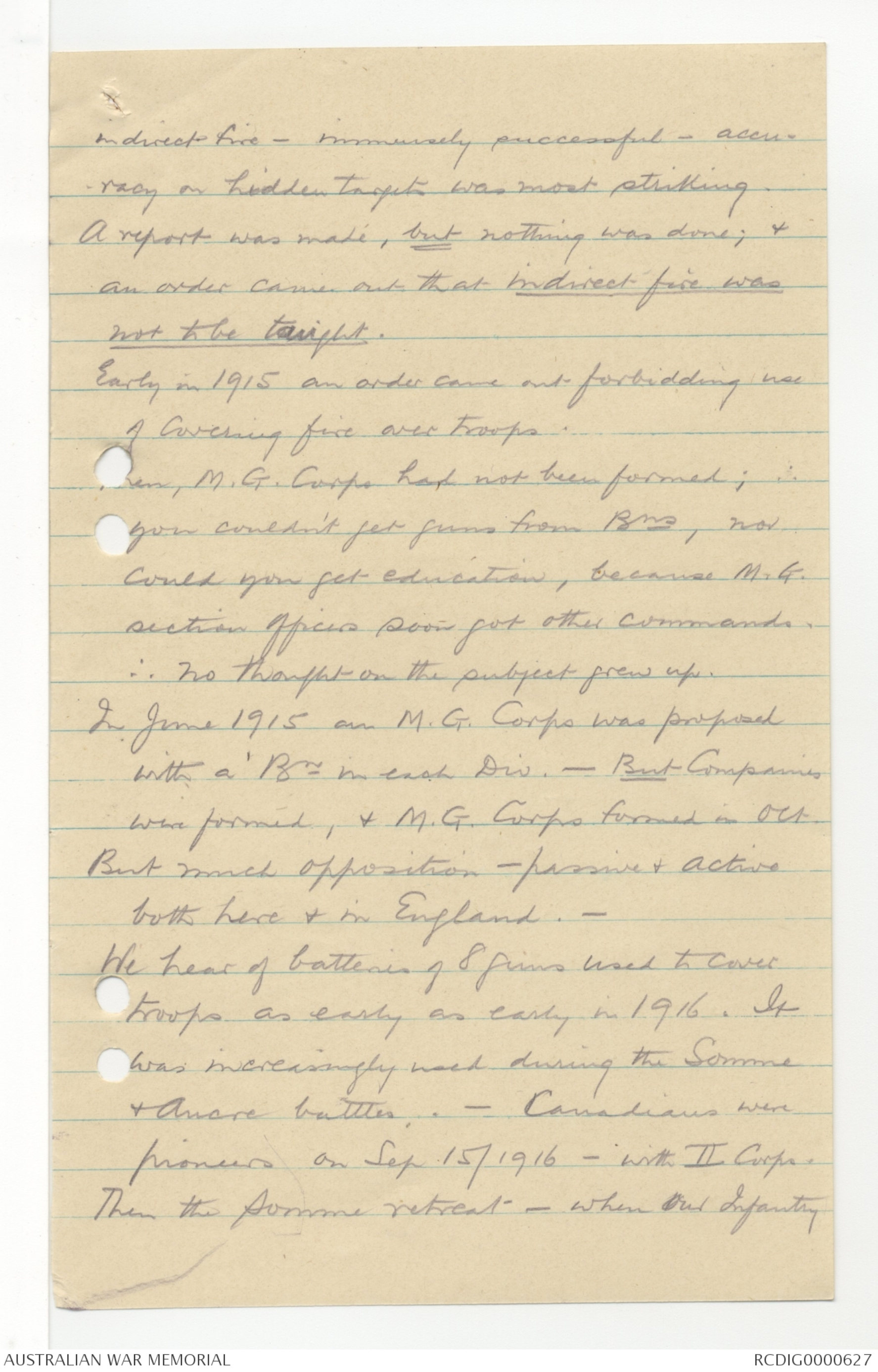
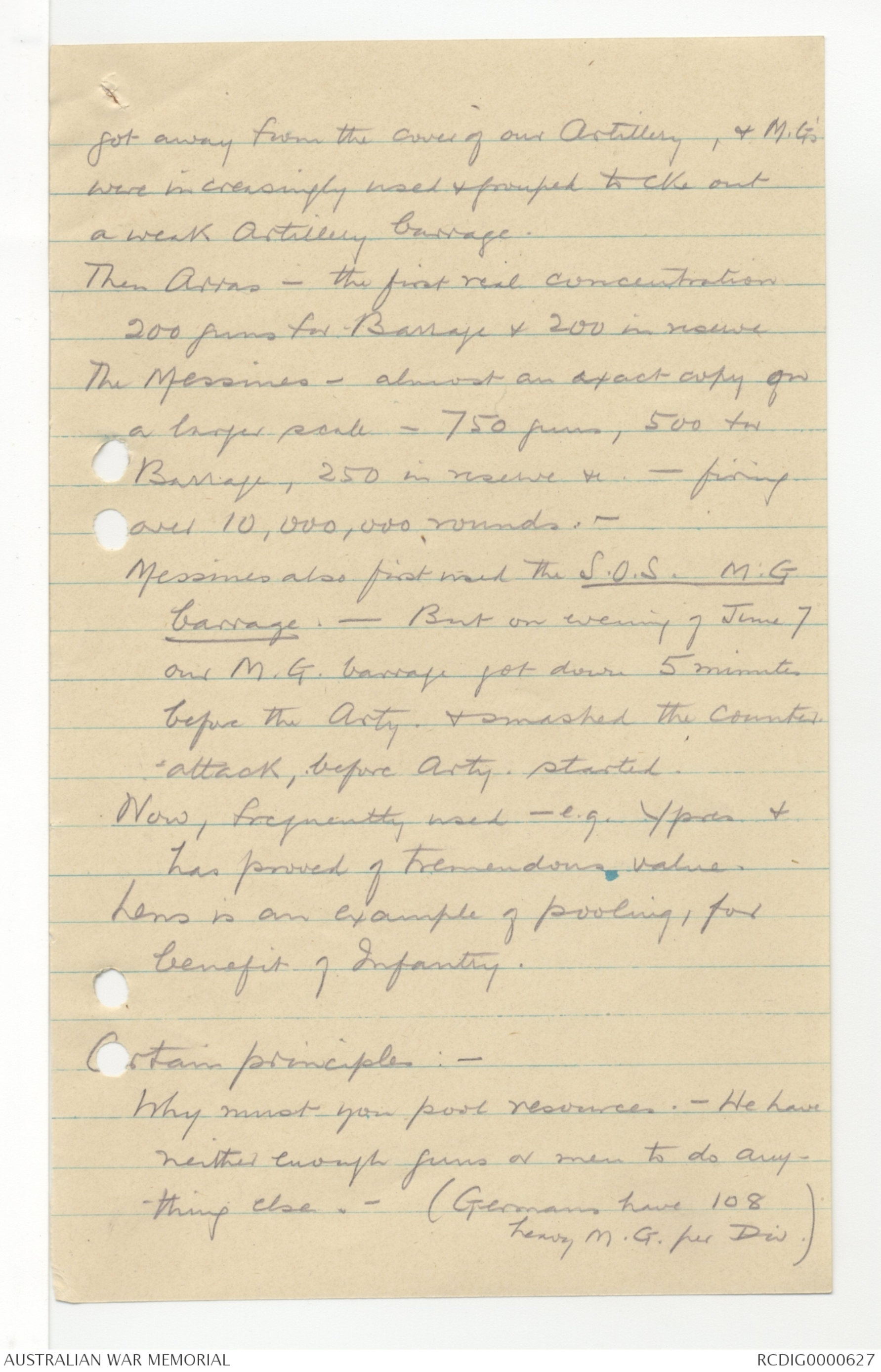
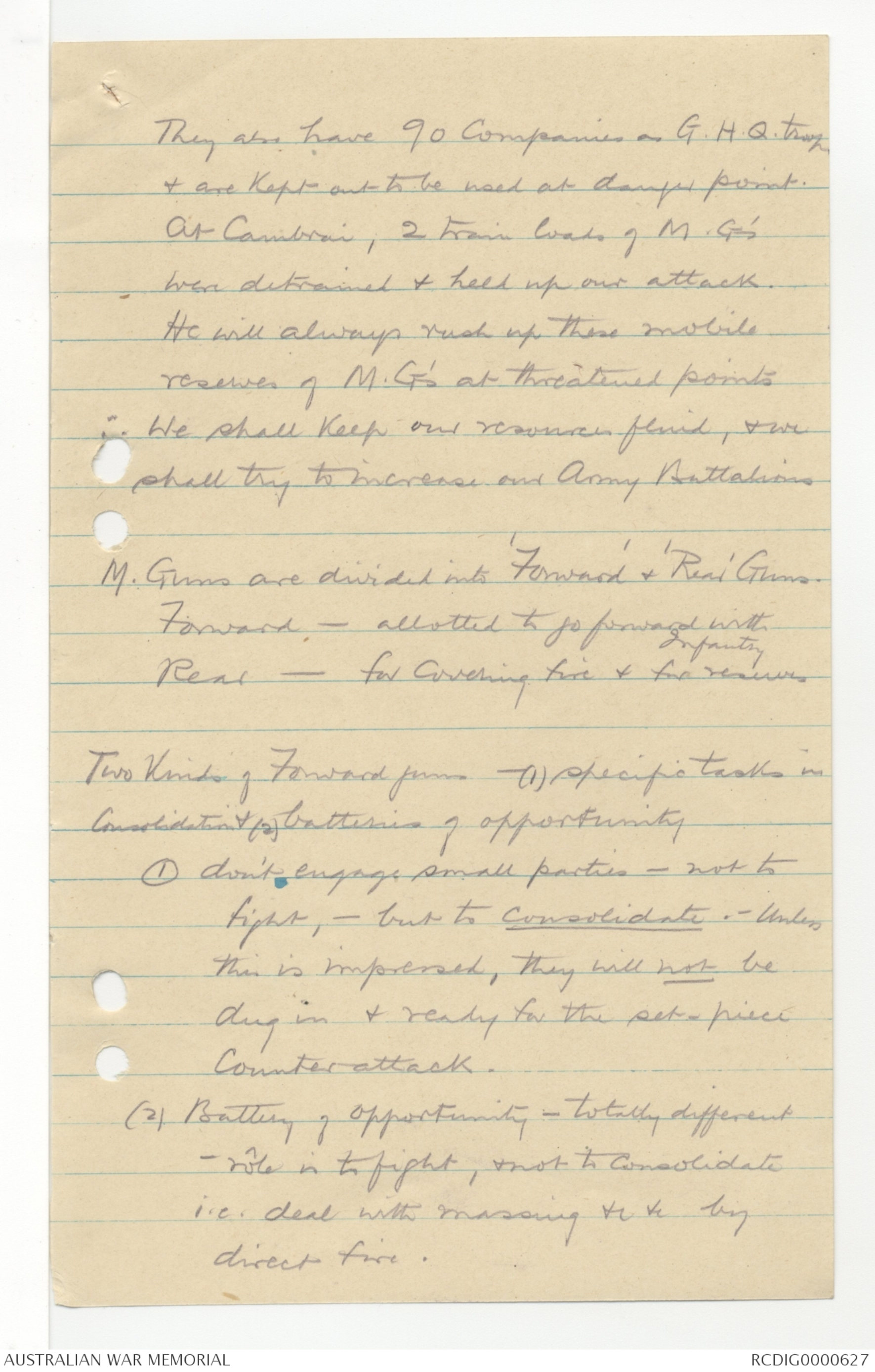
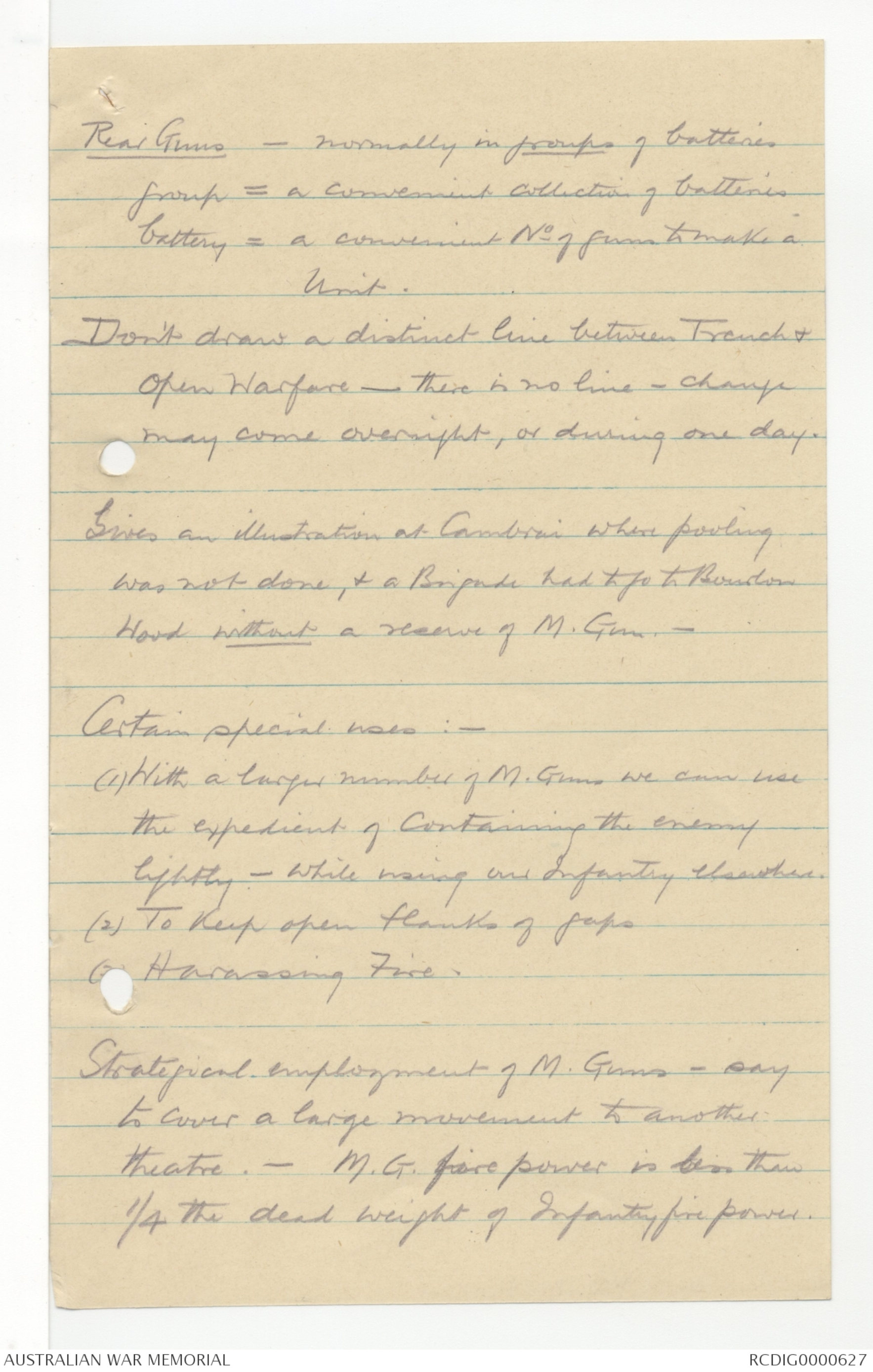
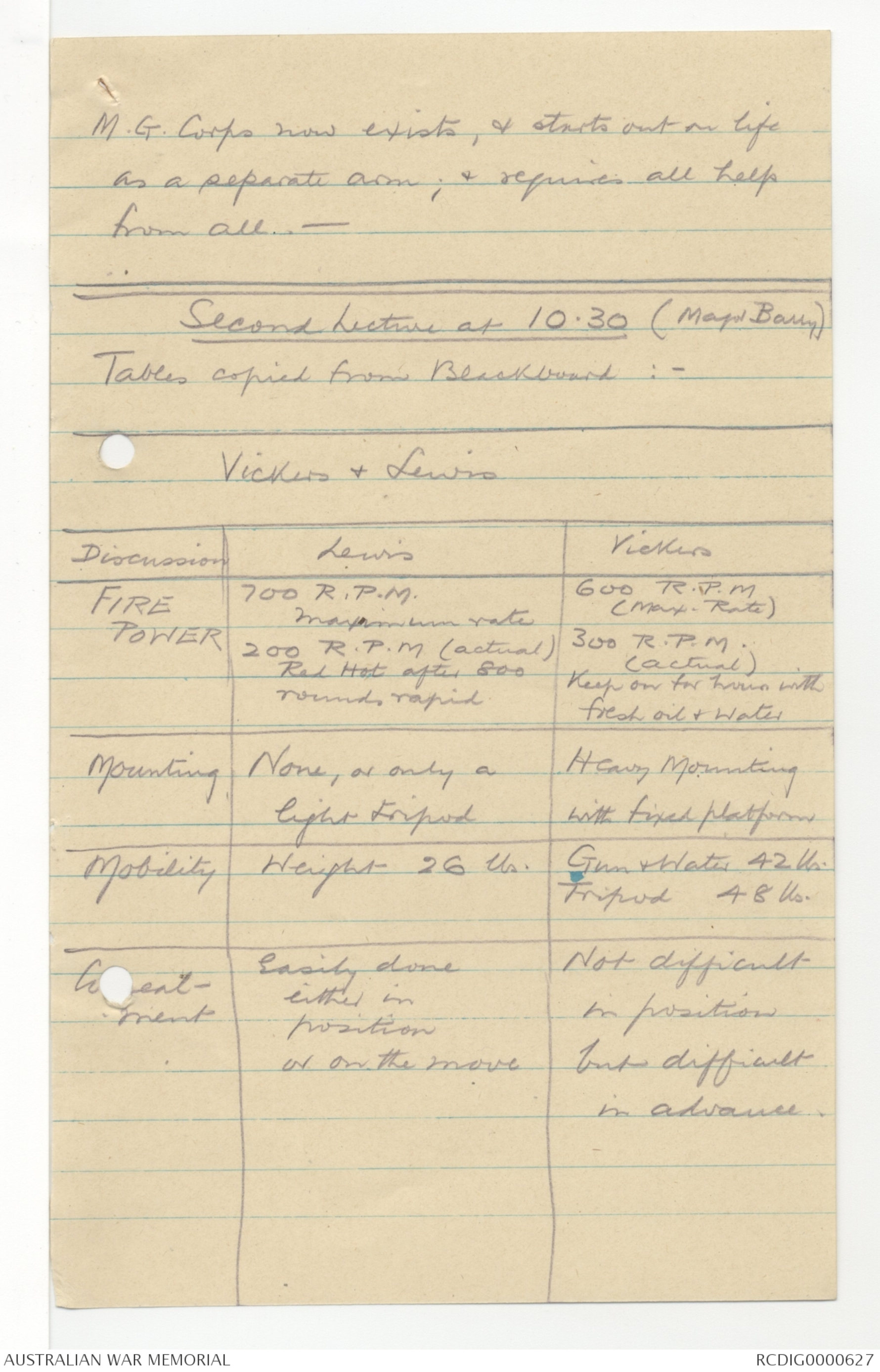
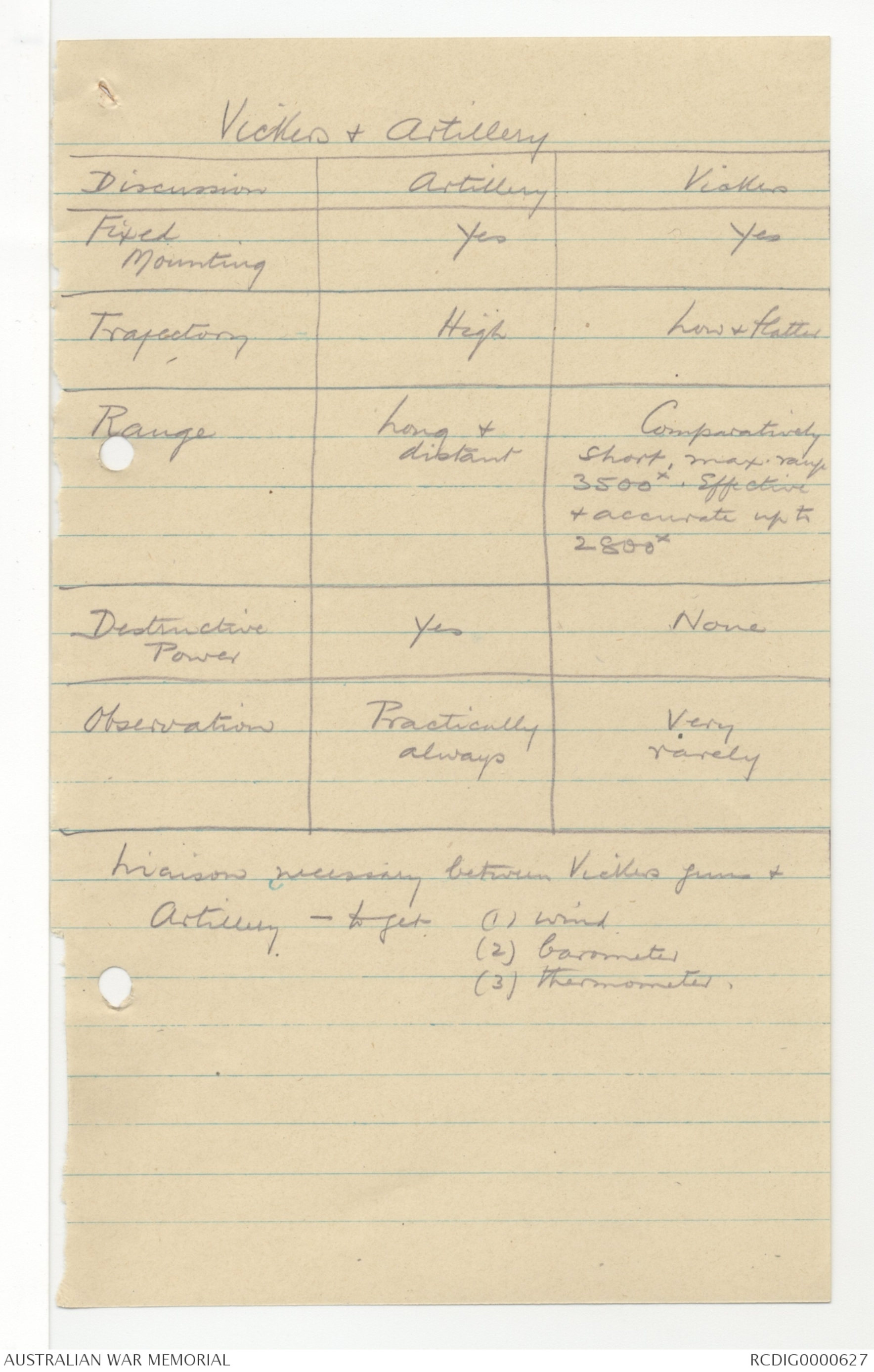
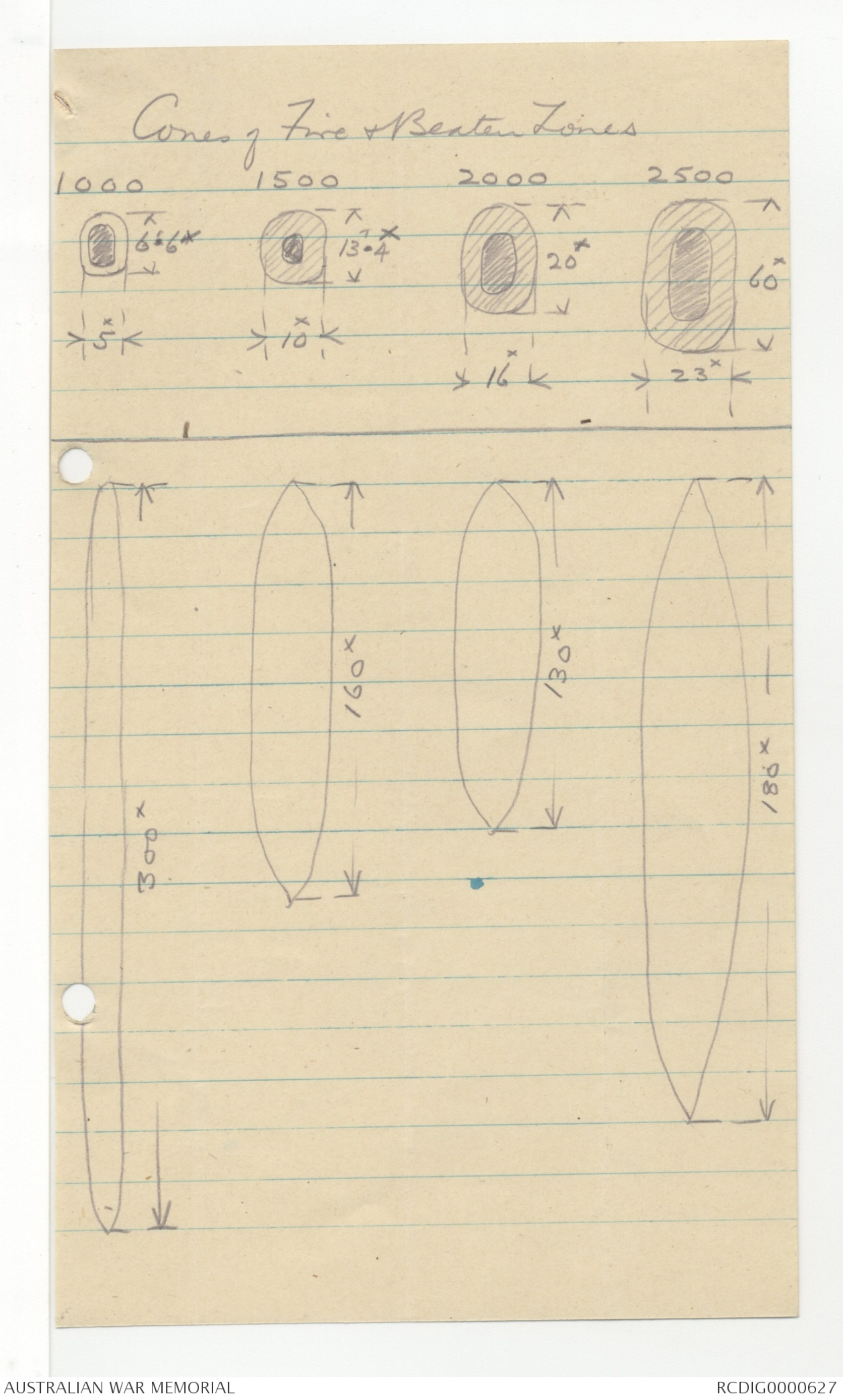
Lt Col Lindsay (9- 5a.m.)
How has present teaching come about?
For principles - see S.S. 192
therefore we won't try to talk about principles.
Goes over the programme as promulgated. -
Some people think that present views are: -
(1) the ideas of extremists or fanatics
(2) outcome of Trench Warfare
(3) outcome of 1917 campaign
Not so; it is result of careful analysis
of all field of experience.
Object is to get a 1st class M. G. Service
In other respects we now don't think
same as we did in 19 June 1916
So also M. G. Tactics has undergone a
complete change since Apl 1917 &
even in last few months.
Knowledge is based on our & others' experiences -
chiefly latter, - because our own view is
necessarily so limited. -
We are now in a position to collect a vast
area of experience. -
Pleads for an "open mind"
First point is Fire Power in War, - M.G. is
merely a machine to produce Fire Power.
Historical Study shows that organization &
tactics have always been based on production
of maximum fire power
even stones, arrows, &c &c
therefore M.G. can be used to save men.
We first learnt from Manchuria. - The
Germans rapidly realized this. See
their writings - even 10 or 12 yrs ago.
"The Army which has the most M.G. will
win". - But even they didn't grasp it
fully.
We began to collect data in 1915, largely
by "private enterprise"; but now we
get official reports from All Corps.
The school is also in good liaison with all
front line Units.
Whole modern teaching is to assist the Infantry
in the Offensive; it is the spirit of all
our modern teaching. - M.G's had
∧ come to be en looked upon as a Defensive Weapon
Higher Command used to give this as a
reason against increases in M.G., as
"they are no good in the offensive". -
Quotes from S.S. 192 para 5 page 6
New thoughts came in since Arras & Vimy
Both British & French Armies 'sat up'. -
Then the French used it at Verdun - with
140 M.G. over the Moroccan Division(!)
Result was magnificent.
It has been said that this Barrage Idea is
new bright idea' suddenly evolved. Not
so at all.- We were taught indirect
fire even before the war, as far back as
1906 & 1907.
Experiments on Salisbury Plain in 1909, in
indirect fire - immensely successful- accuracy
on hidden targets was most striking.
A report was made, but nothing was done; &
an order came out that indirect fire was
not to be taught.
Early in 1915 an order came out forbidding use
of covering fire over troops
[[Then/When?]], M.G. Corps had not been formed; therefore
you couldn't get guns from Bns, nor
could you get education, because M.G
section officers soon got other commands.
Therefore no thought on the subject grew up.
In June 1915 an M.G. Corps was proposed
with a Bn in each Div. - But Companies
were formed, & M.G Corps formed in Oct.
But much opposition - passive & active
both here & in England. -
We hear of batteries of 8 guns used to cover
troops as early as early in 1916. It
was increasingly used during the Somme
& Ancre battles, - Canadians were
pioneers on Sep 15/1916 - with II Corps.
Then the Somme retreat - when our Infantry
got away from the cover of our Artillery, & M.G's
were increasingly used & grouped to eke out
a weak Artillery barrage.
Then Arras - the first real concentration
200 guns for Barrage & 200 in reserve
The Messines - almost an exact copy on
a larger scale - 750 guns, 500 for
Barrage, 250 in reserve & - firing
over 10,000,000 rounds. -
Messines also first used the S.O.S. M.G
barrage. - But on evening of June 7
one M.G. barrage got down 5 minutes
before the Arty & smashed the counterattack,
before Arty started.
Now, frequently used - e.g. Ypres &
has proved of tremendous value.
Lens is an example of pooling, for
benefit of Infantry.
Certain principles:-
Why must you pool resources. - We have
neither enough guns or men to do anything
else. - (Germans have 108
heavy M.G. per Div)
They also have 90 Companies as G.H.Q. troops
& are kept out to be used at danger point
At Cambrai, 2 train loads of M. G's
were detrained & held up our attack.
He will always rush up these mobile
reserves of M.G's at threatened points
Therefore we shall keep our resources fluid, & we
shall try to increase our Army Battalions
M. Guns are divided into 'Forward' & 'Rear' Guns.
Forward, - allotted to go forward with
Infantry
Rear - for covering fire & for reserves
Two kinds of Forward guns - (1) specific tasks in
consolidation & (2) batteries of opportunity
(1) don't engage small parties - not to
fight, - but to consolidate. - Unless
this is impressed, they will not be
dug in & ready for the set-piece
Counter-attack.
(2) Battery of Opportunity - totally different
- rôle is to fight, not to consolidate
i.e. deal with massing &c by
direct fire.
Rear Guns - normally in groups of batteries
group = a convenient collection of batteries
battery = a convenient No of guns to make a
Unit.
Don't draw a distinct line between Trench &
Open Warfare - there is no line - change
may come overnight, or during one day.
Gives an illustration at Cambrai where pooling
was not done, & a Brigade had to go to Bourlon
Wood without a reserve of M. Gun. -
Certain special uses: -
(1) With a large number of M. Guns we can use
the expedient of containing the enemy
lightly - while using our Infantry elsewhere.
(2) To keep open flanks of gaps
(3) Harassing Fire.
Strategical employment of M. Guns - say
to cover a large movement to another.
theatre. - M.G. fire power is less than
¼ the dead weight of Infantry fire power.
M.G. Corps now exists, & starts out on life
as a separate arm; & requires all help
from all.-
___________________________________________
Second Lecture at 10.30 (Major. Barry)
Tables copied from Blackboard:-
|
Vickers & Lewis |
||
| Discussion | Lewis | Vickers |
| FIRE POWER |
700 R.P.M. Maximum rate 200 R.P.M. (actual) Red Hot after 800 rounds rapid |
600 R.P.M. (Max. Rate) 300 R.P.M. (actual) Keep on for hours with fresh oil & water |
| Mounting | None, or only a light tripod |
Heavy Mounting with fixed platform |
| Mobility | Height 26 lbs. | Gun & Water 42 lbs. Tripod 48 lbs. |
| Concealment | Easily done either in position or on the move |
Not difficult in position but difficult in advance. |
|
Vickers & Artillery |
||
| Discussion | Artillery | Vickers |
| Fixed Mounting |
Yes | Yes |
| Trajectory | High | Low & flatter |
| Range |
Long & distant |
Comparatively short, max range 3500x effective & accurate up to 2800x |
| Destructive Power |
Yes | None |
| Observation | Practically always |
Very rarely |
Liaison necessary between Vickers guns &
Artillery - to get (1) wind
(2) barometer
(3) thermometer.
Cones of Fire & Beaten Zones
Diagram - see original document
 Sandy Mudie
Sandy MudieThis transcription item is now locked to you for editing. To release the lock either Save your changes or Cancel.
This lock will be automatically released after 60 minutes of inactivity.